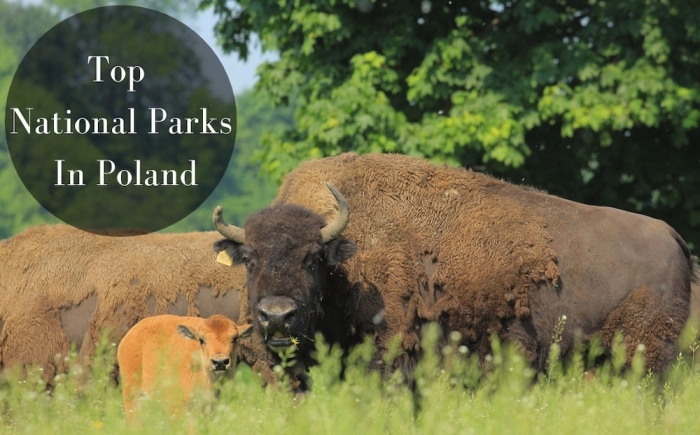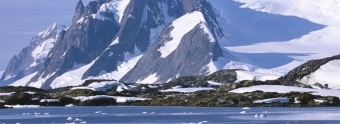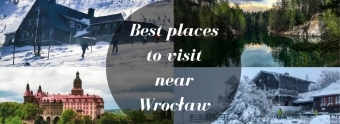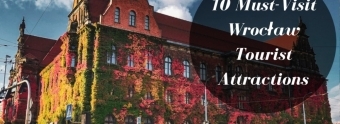Top Polish National Parks To Get Acquainted With The Country’s Rich Biodiversity
August 1, 2022 by Amit Chandra
A mere stroll into lesser frequented nature places presents us with a unique opportunity to savour magical experiences. The experiences that exist wild and free and present in the form of nature’s finest work of art! National parks are the protected spaces where a country’s unique biodiversity flourishes. There are 23 Polish National Parks covering surreal landscapes, exotic wildlife, majestic mountains, lush dunes, and other exotic nature forms where such exotic creations dwell in their natural habitat.
From the world-renowned Białowieża Forest with bison, ancient forests, and numerous trails to the marshland in the East of Poland to the Tatry Mountains in the South, the options to explore national parks in Poland are plenty. These areas are best-suited as the perfect nature getaway in Europe.
The pride of the Baltic coast, Słowiński National Park, is characterised by majestic cliffs by the sea, mobile dunes, blue-watered lakes, wetlands, and forests by the sea. Not much down south from the Baltic, Kampinos Forest near Warsaw offers 350 km of hiking trails, whereas the Ojcowski National Park near Kraków comprises exciting caves, castles, hiking trails, and plenty of outdoor fun activities.
Let’s explore the top national parks in Poland and what they have to offer!
1. Bieszczady National Park (Bieszczadzki Park Narodowy)
The extreme southeastern corner of Poland is where you find the best of the Eastern Carpathians. Bieszczady National Park spreads over 292 sqkm from Poland to Ukraine in the east and Slovakia in the south. The national park has plenty of fancy mountain cottages, lush forests, and dramatic landscapes. The famous Bieszczady Mountains’ beech forests on the UNESCO World Heritage list are known for forests containing a priceless population of old trees. The genetic reserve of beech and other similar species associated with old tree stands are the most noticeable in the region apart from the exotic wildlife.
Address: 38-713 Ustrzyki Górne
Bieszczady National Park’s major highlights: Bears, wolves & bison, trails passing by old wooden churches, Bieszczady Mountains’ beech forests
2. Pieniny National Park
Pieniny National Park (Pieniński Park Narodowy) in southern Poland is a stunning nature marvel stretching from Poland to Slovakia. Well-fed by the Dunajec River, Pieniny National Park is among the top-visited regions in Poland for tourism purposes. Wysoka mountain, at 1050 masl) is the highest point of the national park, with Trzy Korony and Sokolica being other popular peaks.
The Dunajec River Gorge (Przełom Dunajca) has been a global crowd-puller and is a top attraction in Poland. Down south, the Dunajec river flows through deep caves, gorges and mountains creating a surreal landscape and perfect conditions for water activities, with rafting being the most popular in the region.
The steep limestone walls measuring 300-500 meters above the waterline and several meters under make for a glorious sight. The best time for rafting in Dunajec is from April 1 to October 31. Find more information about rafting here.
Pieniny National Park’s major highlights: Czorsztyn Castle (ruins of the fourteenth-century castle) and Niedzica Castle (Zamek Dunajec) on the shores of Czorsztyńskie Lake (Jezioro Czorsztyńskie), lake cruise, hiking and biking paths
More details about the park are on their website
3. Tatra National Park
Address: Kuźnice 1, 34-500 Zakopane
Poland has got its most prolific mountains located down south. Shared with Slovakia, the Tatry Mountains, situated in the Tatry National Park, are endowed with the most prolific nature escapes skirting Zakopane, the famous mountain town in southern Poland. Hiking trails in Tatry National Park vary in difficulty level, from easy to extremely demanding. These extreme trails require utmost precision and professional mountaineering equipment.
Tatry Mountains are considered the top nature and tourist attraction in Poland. At 2499 m, Rysy is the highest peak in Polish Tatras, totally ascendable by people of different age groups with varying fitness levels. Tatra chamois, marmot, snow vole, brown bear, wolf, Eurasian lynx, red deer, roe deer, and wild boar are some of the most prominent wildlife that can be spotted in the Tatry National Park.
Tatra National Park’s major highlights: 275 km of mountain hiking trails for beginners and for advanced climbers, Morskie Oko Lake, Rysy
4. Babia Góra National Park
Address: 34-223 Zawoja
Babia Góra National Park is another fascinating nature reserve tucked in southern Poland, not too far from Tatry National Park. Experienced best from the mountain towns of Zawoja and Zywiec, Babia Góra is one of the 23 national parks in Poland, and a top tourist attraction in Lesser Poland Voivodeship, extending up to Slovakia.
Must read: Head To Żywiec In South Poland For A Perfect Alpine Escape This Autumn
The Park has headquarters in the Zawoja village. Established in 1954, Babia Góra National Park is a lush mountain reserve in the Beskidy covering plenty of ponds formed as a result of landslides. As a tourist, you can expect plenty of fulfilling nature escapes, scenic mountain cottages, viewpoints, touristic trails, and varying nature colours.
Babia Góra National Park’s major highlights: Babia Góra peak, Diablak, Babiogórski Ośrodek Historii Turystyki, Park linowy Wypasiona Dolina
5. Stołowe Mountains National Park
Address: 57-350 Kudowa-Zdrój
Stołowe Mountains National Park, located in the Central Sudetes near the border with the Czech Republic, is another impressive protected nature reserve in southwest Poland. Karkonosze, Bystrzyckie and Orlickie Mountains, and Broumovska Vrchovina on the Czech side are the neighbouring moutains of Stołowe.
The picturesque rock formations, famed as - 'Mushroom Rock', rustic caves, and other fascinating labyrinths are some of the notable features of the Stołowe Mountains National Park, located in the Lower Silesian region of southwest Poland. The sandstone rock formations dominate the landscape of the national park and are considered the oldest rocks in Europe, formed as a result of eroding sandstone.
Deer, bucks, wild boars and foxes are the most prominent wildlife found in Stołowe Mountains National Park. Some of the well-known resorts and spa towns of Lower Silesia like Polanica-Zdrój, Duszniki-Zdrój and Kudowa-Zdrój are located near the national park region. Historical monuments and structures dating back to the 17th and 18th centuries can be spotted here.
Gory Stołowe National Park’s major highlights: Szczeliniec Wielki (919 m.a.s.l.), one of the Stołowe Mountains' highest points, and the Błędne Skały labyrinth, also known as 'Rockville'
6. Karkonosze National Park
Address: Chałubińskiego 23, 58-570 Jelenia Góra
The Sudetes in southwestern Poland is home to the Giant Mountains located in the Karkonosze National Park - a protected nature zone extending over 55 sqkm of area. Karkonosze, also known as The Giant Mountains, cover some of the top peaks of Poland and the highest in the Czech Republic. Karkonosze National Park is most widely accessible from the popular mountain towns like Karpacz and Jelenia Góra, located in southwest Poland. There is over 120 km of well-marked touristic trails crisscrossing Karkonosze.
Śnieżka (1603 masl.) is the highest peak of the Sudetes, as well as the highest peak of the Czech Republic. Hiking to Śnieżka is moderately difficult and can be done by taking one of the mountain trails, typically inaccessible during winter. The views of the post-glacial landscape of the Giant Mountains are other-worldly and are critical to the environment.
Karkonosze National Park’s major highlights: Granite rock forms, the subarctic peat bog Upy, protected by the Ramsar Convention as the habitat for rare plants and animals, Wolf's Creek Valley (Wilczy Potok), Owl Valley (Sowia Dolina)
7. Wolin National Park
Address: 72-500 Międzyzdroje
One of the most scenic national parks in Poland, Wolinski National Park lies close to the Polish-German border in northwestern Poland in the Szczecin voivodeship. The national park's location by the Baltic coast makes it a top tourist attraction in Poland. Also, Wolinski National Park is the place of the genesis of the Odra river. Spread over 109.37 sqkm, Wolin National Park is characterised by steep slopy cliffs and surrounds the protected region of Wolin Island.
Part of Pomeranian Bay and the inner salt waters of Szczecin Bay together has resulted in publicizing of Wolin National Park as the first maritime park in Poland. The National Park forests encloses the scenic post-glacial lakes Warnowskie, Rabiąż, Czajcze and Domysłowskie, and artificial lakes: Turkusowe, Stara Kredownia. The Wolin National Park is also known for preserving habitats of waterfowls, eagle owl (Bubo bubo), grey seal, and harbour porpoise.
Wolin National Park’s major highlights: European Bison, White-tailed sea eagle, aquatic warbler, dunlin, and red-breasted flycatcher are among the exotic wildlife in the park, Turkusowe lake, Zielonka hill, European bison breeding centre and Gosań and Kawcza Góra observation points
8. Słowiński National Park
Address: Bohaterów Warszawy 1A, 76-214 Smołdzino
A sprawling 327 sqkm of landmass characterised by blue waters of the Baltic, shifting dunes, saltwater lakes, historical museums, and a rich marine ecosystem awaits you at yet another fascinating national park in Poland, the Słowiński National Park. Spread along the Baltic coast of northern Poland, the Słowiński National Park is a protected nature reserve known for its majestic cliffs, various marked biking and hiking trails, and aquatic bird species such as - the white-tailed eagle, the eagle owl, cormorant, the black stork.
Among other fascinating things in the park, one can spot - marsh plants, pine trees, ancient tree stumps and the fossilized remains of the forest. The idea behind setting up of national park region was to conserve the seaside coastline, lakes system, peat bogs, meadows and woods, but the focus remained on protecting one of the last moving dunes of Europe.
Słowiński National Park’s major highlights: Mobile sand dunes, lakes, wetlands, and forests by the sea, Łebsko Lake and Łącka Dune offer views of the Baltic Sea, 105 miles of paved hiking paths, a stay in Leba city
9. Bialowieza National Park
Address: Park Pałacowy 11, 17-230 Białowieża
Much famed and protected for its primaeval forest, European bison population, nature museums, and beautiful orthodox churches, Białowieża is a Polish national park in northeastern Poland totally worth exploring. A major part of the Białowieża is under strict protection from the authorities, given its importance. The major highlight of the Białowieża National Park is Białowieża Forest, the last preserved primaeval forest in the European Lowland Area. Moreover, the Polish part of Białowieża Forest is home to almost 500 European bison.
The park's unique biodiversity is a major tourist attraction. With over 120 bird species, 52 mammal species, 8000 invertebrate species, 200 moss species and 283 lichen species, there is plenty to explore in this top tourist attraction in Poland. Some other characteristic things of the park region are a large amount of deadwood and a large population of European Bison, which is also the last mainstay of the massive animal living free in the Białowieża Forest after being reinstated into the national park ecosystem.
Bialowieza National Park’s major highlights: European Bison Reservation, Open-Air Museum of Wooden Architecture,
Sighting Poland’s incredible nature and wildlife in Polish National Parks is probably the best return you can have during a trip here! Which is your favourite Polish national park & why? Let us know your thoughts in the comments below.
Amit Chandra
Amit is a travel writer & founder of the blog Whistling Hound. A perpetual nature lover, Amit moved to Wrocław, Poland, three years ago. Ever since, he has been gallivanting around European countries, soaking up the best of places & sharing his experiences across digital media. From working as an Aurora Guide in Lapland to walking the streets of Naples & Rome like a local, Amit has done it all. Currently, he's treading through the best of southwestern Poland & is not stopping anytime soon!
















































